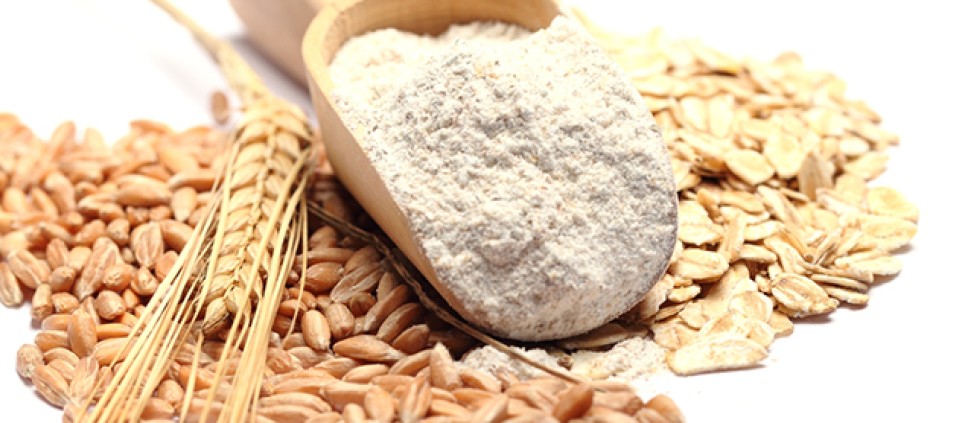Five Tips for Going Gluten-Free

Thinking about going gluten-free? The prospect can be daunting at first. It can be a challenge to find gluten-free dishes in restaurants, and cooking at home requires some creativity. Many can benefit from ditching gluten grains like wheat, barley, and rye and incorporating more nutritious grains like quinoa, millet, and teff into their diet, says Kripalu presenter Leslie Cerier (also known as “The Organic Gourmet”), and it’s a lot more fun (and delicious) than you may think.
Why Going Gluten-Free Is Good for You
According to Leslie, who is a national authority on gluten-free cooking and author of six cookbooks, including Gluten-Free Recipes for the Conscious Cook, gluten-free cooking provides “superior nutrition.” For starters, “There are so many minerals and vitamins in gluten-free grains, and they’re often higher in fiber.” Gluten-free cooking gives foodies more flavors to work with, she says, and decreases the likelihood of consuming genetically modified strands of grains (with the exception of corn, which Leslie recommends buying organic.)
In a nutshell, gluten-free grains are “good for you, and good for the planet,” she says. “Some of these grains produce high yields. And some grow in harsh conditions, from arid uplands to moist tropical settings, so they could feed the world for global warming.” Oh. And they taste good, too.
From Deprivation to Celebration
Leslie says she does a lot of coaching and teaching about gluten-free cooking in various cities and towns, and she’s observed that some people really feel like they’re deprived when they’re told they should go gluten-free. “I’m coming at it from a completely different angle. I don’t have to eat gluten-free, but I often choose to eat that way, because it’s so tasty.”
Gluten-free cooking, she says, can be a lot more creative than simply buying GF pasta and pastries or replacing gluten flours and grains and with gluten-free ones. “It’s all about pleasure and variety. It’s all about the yum for me.”
Here are Leslie’s top five tips for gluten-free cooking. Think of them as ways to “practice yoga in the kitchen,” she says, because they encourage you to be flexible, creative, and engage your senses.
5 Tips for Gluten-Free Cooking
1. Expand your repertoire. Add these 10 gluten-free grains to your shopping list: millet, whole grain rice, sorghum (aka milo), teff, wild rice, corn, quinoa, amaranth, buckwheat, and oats. The last four grains in this list are complete proteins, Leslie says, so include them liberally in your diet, especially if you have a physically demanding job or an active yoga practice, or if you’re a dancer or an athlete.
2. Go beyond toast. Instead of eating gluten-free toast for breakfast (which often contains GMO ingredients such as xantham gum, a corn derivative), “start your day with a nutritional powerhouse” of porridge made with gluten-free grains such as amaranth, millet, oats, or teff, says Leslie. Experiment with different flavors by cooking them in water, cow’s milk, or coconut milk, adding spices such as ginger and cinnamon, dried fruits, and coconut. Or make waffles or pancakes with gluten-free flours such as maca, teff, sorghum, or corn.
3. Make sushi with exotic grains. Roll some vegetarian sushi with heirloom varieties of rice, such as Bhutanese red rice, forbidden rice, sweet brown rice, or jade pearl rice. Go beyond the classic avocado and cucumber roll, says Leslie, and get creative with your fillings, mixing and matching seasonal vegetables that are sautéed or raw and grated.
4. Cook like an artist. “Start thinking of your gluten-free grains as your neutral backdrop and add colorful veggies, herbs, and flowers to create a mosaic of colors on your plate,” says Leslie. Cook a pot of your favorite gluten-free grain and spoon a few mounds onto your plate. Then add chopped veggies, toasted nuts, and seeds, then garnish with fresh flowers or herbs. Or cook your grains and vegetables together. For example, Leslie suggests boiling corn grits, millet, or teff with carrots, squash, or greens. When the dish is done, pour it into a loaf pan, let it cool for 30 minutes, and then cut it into slices. “Viva la choices!” says Leslie.
5. Experiment with textures and flavors. “You can cook the same grain every day but never cook it the same way twice,” says Leslie, by varying your cooking techniques to produce different textures and flavors. “Besides the standard boil and simmer, you can toast, marinate, bake, sprout, sauté, and even presoak grains to produce different textures and flavors,” she says. Another option is to dry roast your grains in the oven to create a nuttier flavor, and then boil them in water with a pinch of salt, or in stock. Or give your grains a moist texture and richer flavor by sautéing them. This style of gluten-free cooking “opens up a world of healthy eating pleasure,” says Leslie. “Because if it doesn't taste good, why bother?"
© Kripalu Center for Yoga & Health. All rights reserved.